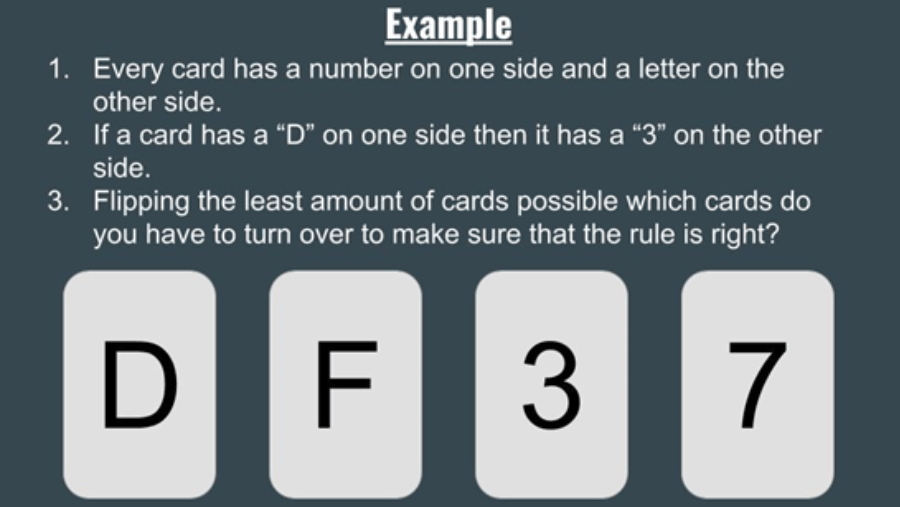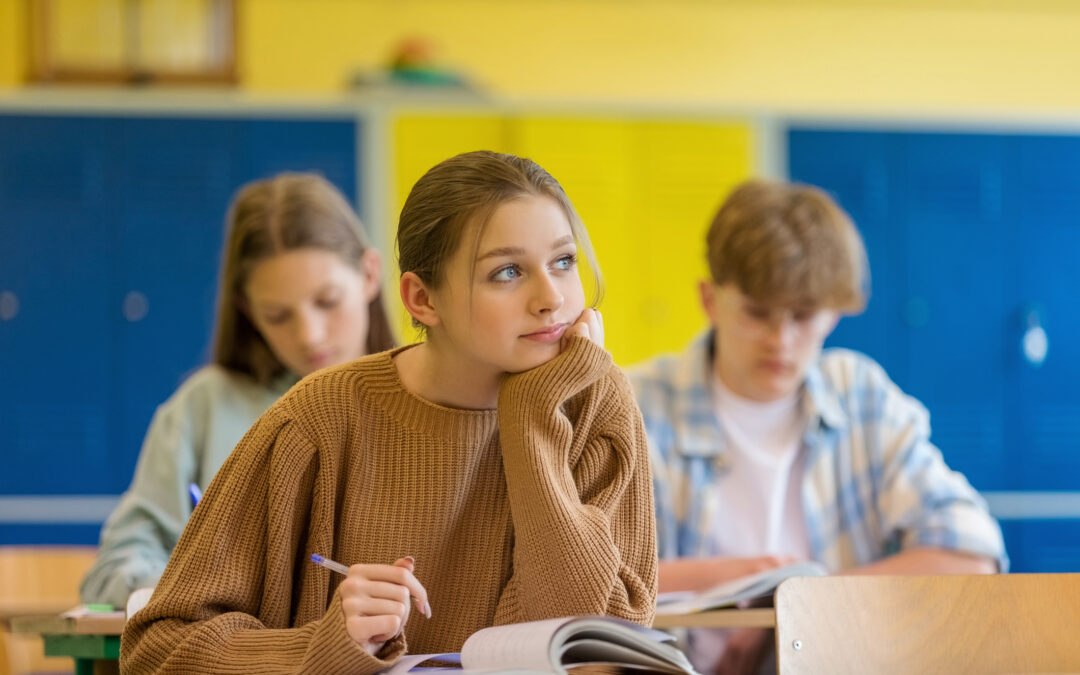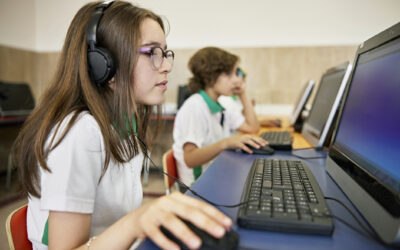By integrating lessons on confirmation bias into the curriculum, educators can equip students with critical thinking skills necessary to navigate information online. This helps students question the reliability and bias of the sources they encounter, encouraging a more analytical and less passive consumption of digital content. It also fosters an environment where students learn to recognize their own biases and the importance of considering multiple viewpoints, thereby enhancing their ability to engage with complex issues thoughtfully and respectfully.
Why Understanding Confirmation Bias is Important in Digital Citizenship
Learning about confirmation bias is crucial for students to become responsible digital citizens. As they learn to identify and challenge their own biases, students can better understand the impact of echo chambers and filter bubbles created by algorithms on social media platforms. This awareness is vital for developing empathy and promoting diversity of thought, enabling students to contribute to more informed and less polarized online communities.
By prioritizing the teaching of confirmation bias within digital literacy programs, schools can help prepare students to be discerning information consumers as well as positively shaping the digital landscape of the future.
How to Teach Students About Confirmation Bias
In the first lesson of cognitive biases, confirmation bias is covered. This lesson goes a long way in covering many topics related to digital citizenship. The great thing about confirmation bias is that it is easy for students to spot and it can be a steppingstone for utilizing the internet and technology to its full potential.
We tell students, “You all have more access to information than anyone who has ever lived. The problem is that not all the information is true.” If students are taught how to spot reliable information while avoiding misinformation, they can learn nearly anything they could ever want to know. Here’s how:
1. Define Confirmation Bias
Confirmation bias is a cognitive bias that causes individuals to search for, interpret, favor and remember information in a way that confirms their preexisting beliefs or hypotheses. It also gives disproportionately less attention to information that contradicts them. This bias affects not only the information people seek out but also how they interpret and recall information, leading to a skewed perception of reality.
Confirmation bias plays a significant role in various aspects of life, including personal beliefs, social interactions, and political opinions. It can hinder critical thinking and rational decision-making by limiting exposure to diverse viewpoints and reinforcing existing prejudices and misconceptions.
In digital literacy, confirmation bias includes searching for evidence or data that agrees with what you already believe to be true instead of searching for evidence to the contrary. This can be extremely dangerous because it limits the number of inputs into the brain, which limits the number of outputs as well.
2. Conceptualize Confirmation Bias With an Activity
To help students further understand what this definition means for them, we recommend asking students to look at a modified example of a classic experiment originally done by Peter Wason in 1966:

When students are asked to answer the example nearly all students answer saying the D will need to be flipped by itself, or both the D and 3 should be flipped.
The correct answer is only the card D and card 7 should be flipped. Card D is fairly obvious, but the 7 card is the least intuitive of the set. The reason for this is because it disconfirms the rule. If the students were to flip over the 7 and find a D, then their rule would be incorrect.
In the post-experiment discussion, every card and the reason why it should or should not be flipped is revealed. This quick example provides students with simple evidence of the phenomenon of confirmation bias.
So how is this applied to digital citizenship? The first step is to begin by talking to students about how this process of reasoning is dangerous when applied to real-life situations. When a person is trying to decide if their point of view is correct, they are more likely to search for evidence that supports their conclusion than the other way around.
For example, this can be applied to a much more serious issue like climate change. If someone believes that climate change is not real or that it is a natural phenomenon that humans have no control over then that person is more likely to read an article titled, “Why Scientists Keep Getting the Numbers Wrong on Climate Change,” rather than an article titled, “The Science of Climate Change and How You Can Help.” That applies to the opposite point of view as well.
3. Develop Strategies to Overcome Confirmation Bias
As students have been told, there are nearly infinite amount of information online (inputs). Today anyone can open hundreds of websites and articles that agree with their point of view no matter how wrong they may be. They can then share this information online (outputs) so that all of their friends who agree with them can then read that information as well.
Here are some simple ways to help improve the reasoning process:
- If you have an opinion on a subject, assume that said opinion is wrong.
- When looking for evidence (inputs), look for evidence that may poke holes in the original point of view.
- The more inputs (evidence) you have, the more outputs (data, facts) you can produce.
- Verify that your information is coming from a reliable source.
- Always be willing to change your mind in the face of more evidence.
4. Put These Strategies into Action
One of our favorite things to do is to propose a challenge to the students. We ask them to think of their favorite athlete and then think about another athlete who other people believe to be just as good or even better. Their task is to think about the different metrics by which we would assess that player and compare those two player’s metrics.
This is fun because students can see that although Lebron James is their favorite player, Michael Jordan has him beat in terms of championship wins, points per game, and rebounds per game.
After comparing the two players (receiving inputs), usually using a T chart, we talk about how Lebron can still be your favorite player subjectively, but you are now much more knowledgeable and can talk about the objective statistics and form a much more reasonable and informed response to the question of who is better between Lebron or Jordan (outputs). Some students even change their minds and admit that Jordan is the better player overall, but that they still like watching Lebron because he is on TV right now.
This process is illuminating for students. Because students went from definition to theory to application, they have a much deeper understanding of the concept as a whole. They can more easily recognize this bias in the real world and begin to overcome it with some simple tools.
This article was originally published in June 2020 and has since been reviewed and edited for relevance, tone, and information.

Marco Arreola
Guest Writer
Marco Arreola previously taught Design and Business Technology at Goodrell Middle School in Des Moines. His participation in the 2019 Google Cloud Next conference in San Francisco helped him realize how important it is for students to have access to technology and resources so that they do not fall behind in a quickly advancing world. He has a passion for teaching students of diverse backgrounds to become well informed and engaged 21st century citizens. In the design and business technology classes, he not only presents students with current technological resources but provides them with strategies to explore technology in a safe and meaningful way. Marco believes that today’s generation has the potential to learn far more than any other generation, but they need to know how to get that information and how to distinguish the good information from the bad.
Further Reading
Understanding Proclamation 2024 and the TA-TEKS
Understanding Proclamation 2024 and the TA-TEKS In 2024, Texas introduced Proclamation 2024 to begin the process of adopting new instructional...
Guide to Teaching Algorithms in Computer Programming for K-12 Students
Algorithms are the heart of computer programming, providing the step-by-step instructions that computers follow to perform tasks and solve problems....
Planning Digital Literacy Assessment: A Simplified Approach
As educators know, assessments are critical to the learning process. They provide beneficial self-checks to students, informative results to...




